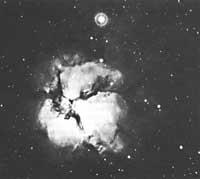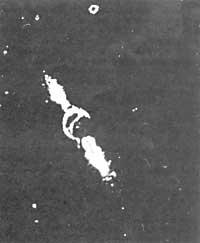How did the solar system come about?
1985/12/01 Arregi Bengoa, Jesus Iturria: Elhuyar aldizkaria
In recent years, the discoveries of astrophysicists have aroused great curiosity at all levels. New concepts like Kuasare, Pulsar have great news. Also, since 1965, with the discovery of microwaves, the development of cosmological theories has been used.
The objective of this work has been to make reference to the problems that have been addressed in all these areas. However, due to the length of the work I have had to leave many things out of work, but the critic I have used to order issues that did not affect much the structure and the objective of the work has been closeness. The first Solar System has been studied, then the stars, the following galaxies and finally the Universe as a whole. However, we have a timeline to finish the work so as not to lose that other perspective.

Finally, comment before starting with the topic that all the points that are touched must always be read with a critical doubt, since in most cases things are not yet consolidated and in a few years we may have to change the scheme.
Solar system
In this section we will analyze our closest environment. To do this, and to present research as a very broad field, we make the most accepted theory about the origin of the Solar System. We are not going to carry out an exhaustive analysis of the Sun and the planets, following the objective of the work, the space research programs will be mentioned, along with the most interesting results they have given.
Origin of the Solar System
When analyzing the origin of the solar system, astronomers encountered two special difficulties: on the one hand, that the data from the observations were scarce due to the technical limitations of the telescopes, and on the other, that they knew a single solar system, ours.
As we will see later, the theory about the birth and evolution of stars is quite developed and consolidated. This evolution has been possible thanks to the possibility of studying in the sky the thousands of stars that are in the different phases of evolution. With the solar system we have not had the same luck and that second obstacle is insurmountable.
As for the difficulty mentioned above, in the last thirty years the situation has changed radically. A lot of new information about the Solar System has been obtained through the data provided by the meteorite study and the space campaign. This information greatly limits any theory. So, although they were many before, what is now called nebular theory is the most accepted and that will, of course, be what we will develop next. Works by Kuiper, Schatzman, Levin, Hoyle (in some works) Cameron, Pive, Perri and Safronov, to name a few.
According to this model, it has been briefly said that the Solar System was born some 4.6 billion years ago in an arm of our galaxy, as a result of the contraction of a cloud of gas and dust. As the cloud contracted it turned faster, while the centrifugal force shaped it as a disk. For a moment, the area of this album became so massive, dense and hot, in which hydrogen fusion reactions were produced forming the star cloud: Sun. Then the dust fractions that remained around the Sun, gathered together, formed the planets.
We are now to become the guiding thread of this nebular theory and to mention the experimental bases that have been found lately.
Nebular theory considers two basic affirmations proven: the first, that the Sun and the planets were formed at the same time; the second, that the planets are formed by interstellar materials, such as the Sun, and not by the loss of another star (for example, by colliding with the Sun).
The second premise is justified in the measurements of the deuterium and hydrogen (D/H) relationship carried out in the 1970s. These measures show that the value of the D/H coefficient is equal in Jupiter's atmosphere and interstellar matter, while in the Sun's photosphere the value is much lower. The interpretation is very simple. Deuterium is very unstable to thermonuclear reactions and quickly breaks into a star when it is capable, so it does not appear in the Sun. Therefore, we can say that the planets are formed by interstellar matter and not by matter lost by the Sun or another star.
The experimental basis of the first statement is found in the geological remnants of the Earth, but the interpretation will not be so correct.
As is known, plutonium-244a and iodine-129a are unstable atoms, with disintegration periods of 8.10 7 and 16.10 of 6 years respectively. These elements occur in the explosions of massive stars, which extend through space with the force of explosion. In the geological study of the Earth there have been found remnants of the disintegration of these elements, so, although at present they have disappeared, we can say that they existed when the Earth was formed.
Thus, the time elapsed from the formation of the primitive solar nebula with interstellar radioactive gas to the appearance of the planets was less than the period of disintegration of these elements. It is estimated that this time was about 100 million years, but we still limit it more by seeing the birth of the stars.
Stars are due, as we know, to the contraction of massive clouds. These clouds, formed by interstellar matter, move around the nucleus of the galaxy giving tours of very large periods. In their travels they travel alternately the arms of the galaxy and its spaces.
The time of each turn, that is, the time of passage of an arm or space between arms is about 100 million years, and when the cloud enters an arm suffers a great deceleration and contracts. At a given time this contraction may be enough to ignite thermonuclear processes in the cloud, turning the cloud into a star. How can we link all this to what was said in the previous paragraph?

Gai honi buruzko eduki gehiago
Elhuyarrek garatutako teknologia





